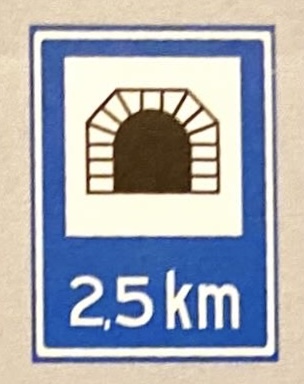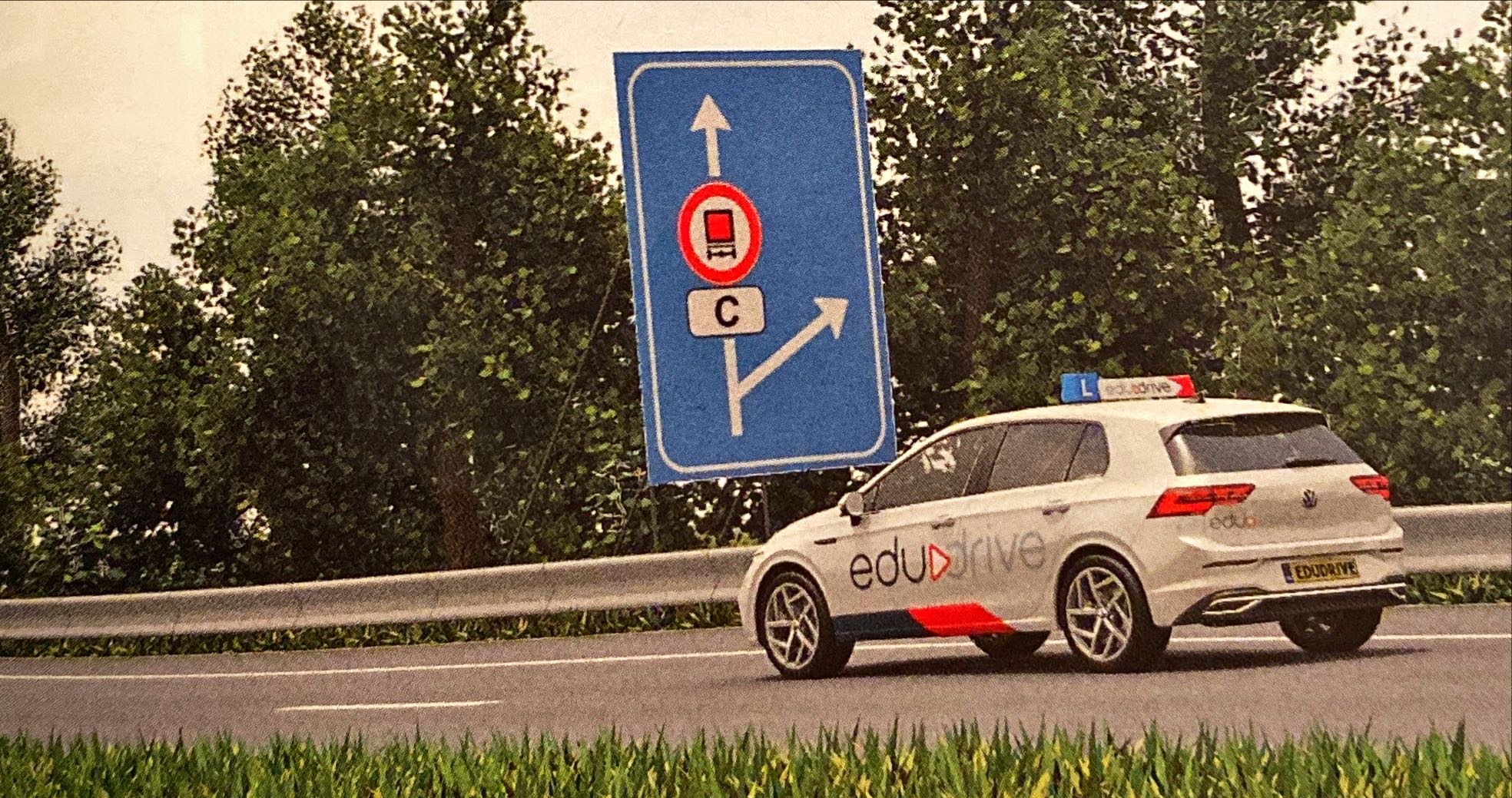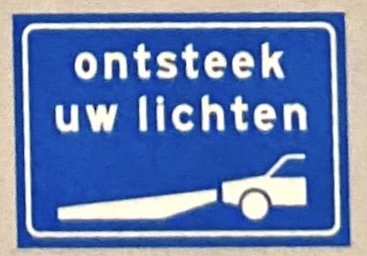When you encounter the L13 sign on your route, it indicates that you are approaching a tunnel.

Occasionally, there is a dedicated lane for traffic heading towards the tunnel. This lane can be identified by a tunnel symbol marked on the road surface.
Traffic rules in tunnels are the same as on regular roads, but there are specific considerations for driving behavior before entering and while inside the tunnel.
Approaching the Tunnel
- Turn on your dipped headlights to ensure you are visible to other drivers in the tunnel.
- Remove your sunglasses. 😎
- Observe the traffic signs and signals at the tunnel entrance.
Driving Behavior in the Tunnel
- Adhere to the speed limit. Many drivers reduce their speed in a tunnel; adjust your speed accordingly. 👀
- Maintain extra distance from the vehicle in front.
- Stop only if necessary, such as in a traffic jam or an accident.
- Turn off your engine if you come to a stop. => Air circulates much slower in tunnels ‼️
- If there’s a traffic jam, activate your hazard lights and keep a safe distance. Remain in your vehicle.
- Park your car only in case of an emergency (refer to emergency procedures).
- Never turn around or drive in reverse. ‼️
Emergencies in the Tunnel
When traffic stops in the tunnel, traffic control (Rijkswaterstaat) is automatically notified.
They assess the situation through camera footage. In a major emergency, safety systems are activated, access roads to the tunnel are closed off, and emergency services are alerted.
Road users receive instructions via an audio message about the escape route, with special lighting indicating the path. Audible signals at emergency doors help locate them in darkness or smoke.
Safely Parking in a Tunnel
In case of a breakdown, fire, or accident, always park your car:
- On the hard shoulder;
- In a parking bay;
- Or as far right as possible.
This ensures safety for yourself and other traffic and keeps the way clear for emergency services.
If You Have Car Trouble in the Tunnel
- Activate your hazard lights.
- Try to exit the tunnel. If unable, then park your car.
- Turn off the engine and walk along the tunnel wall in the travel direction to the nearest aid station.
- Use the emergency phone there to contact the road traffic controller for assistance.
- Wait for help 50 meters beyond your car, along the tunnel wall.
There are aid stations every 50 meters in every tunnel. You’ll find fire extinguishers and an emergency phone with a direct line to traffic control.
These emergency phones already inform traffic control of the location, ensuring traffic control can arrive to the scene faster.
An accident
- Turn on your hazard lights and park your car safely.
- Turn off the engine and get out carefully.
- Walk along the tunnel wall in the direction of travel to the next aid station, call road traffic control and ask for help or call 112 on your mobile.
- Wait for the emergency services and provide first aid to any injured persons.
In case of fire
- Turn on your hazard lights.
- Is your car on fire? Try to drive out of the tunnel. If this is not possible, park your car safely.
- Is another vehicle on fire? Keep your distance and park your car.
- Never turn around or drive backwards. ‼️
- Turn off the engine and leave the key in the ignition, emergency services may have to move your car later.
- Walk along the tunnel wall in the direction of travel to an aid station, grab the fire extinguishers available, call road traffic control and ask for help. 🧯
- Provide first aid to injured people.
- Try to extinguish a starting fire. ‼️ If this does not work, walk away from the fire and leave the tunnel via the escape route. Follow the instructions that are announced.
Hazardous Substances
Vehicles transporting certain hazardous substances are often not allowed to use tunnels, but follow a different route. This alternative route is indicated by sign K14.
Categories: B, C, D, E. These apply all across Europe.

